 Technology peripherals
Technology peripherals
 AI
AI
 Apple's 'matryoshka”-style diffusion model reduces the number of training steps by 70%!
Apple's 'matryoshka”-style diffusion model reduces the number of training steps by 70%!
Apple's 'matryoshka”-style diffusion model reduces the number of training steps by 70%!
A latest research by Apple has greatly improved the performance of diffusion models on high-resolution images.
Using this method, the number of training steps for images with the same resolution is reduced by more than 70%.
At the resolution of 1024×1024, the picture quality is directly full, and the details are clearly visible.
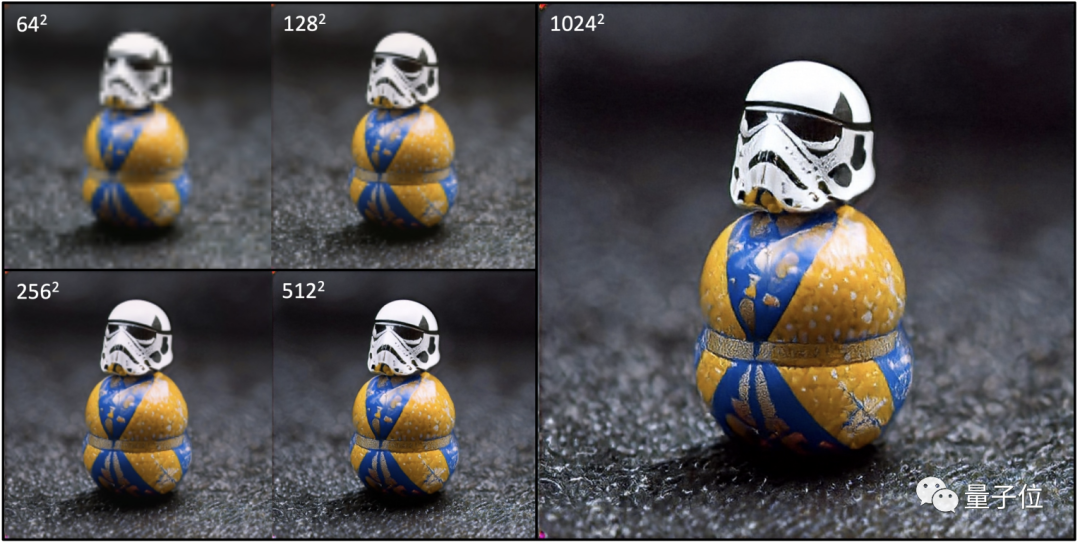
Apple named this achievement MDM. DM is the abbreviation of Diffusion Model, and the first M stands for Matryoshka.
Just like a real matryoshka doll, MDM nests a low-resolution process within a high-resolution process, and it is nested in multiple layers.
The high- and low-resolution diffusion processes are performed simultaneously, which greatly reduces the resource consumption of the traditional diffusion model in the high-resolution process.

For a 256×256 resolution image, in an environment with a batch size of 1024, the traditional diffusion model needs to be trained for 1.5 million steps, while the MDM only requires 390,000, a decrease of more than 70%.
In addition, MDM adopts end-to-end training and does not rely on specific data sets and pre-trained models. It improves speed while still ensuring generation quality and is flexible to use.
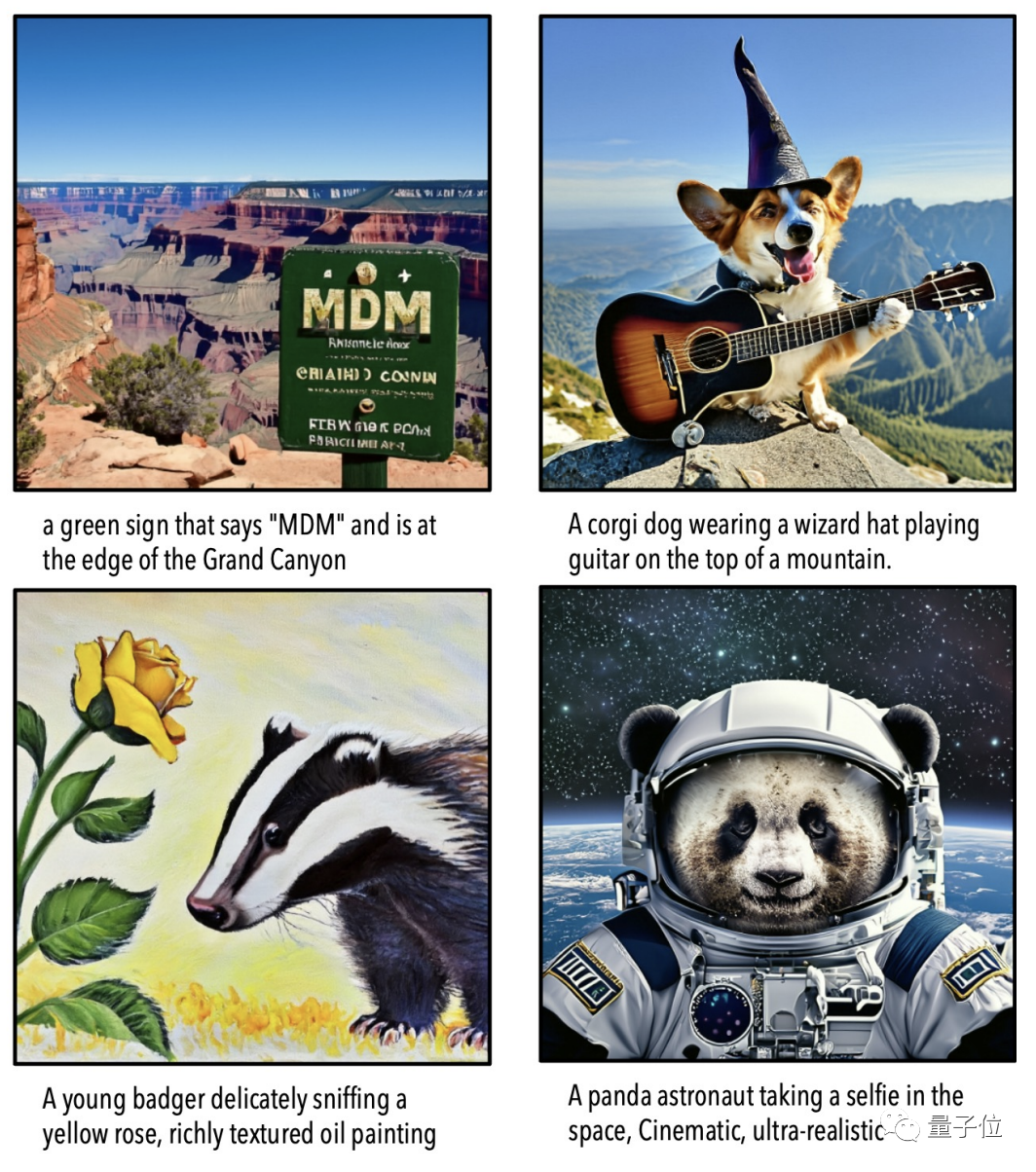
Not only can you draw high-resolution images, but you can also synthesize 16×256² videos.
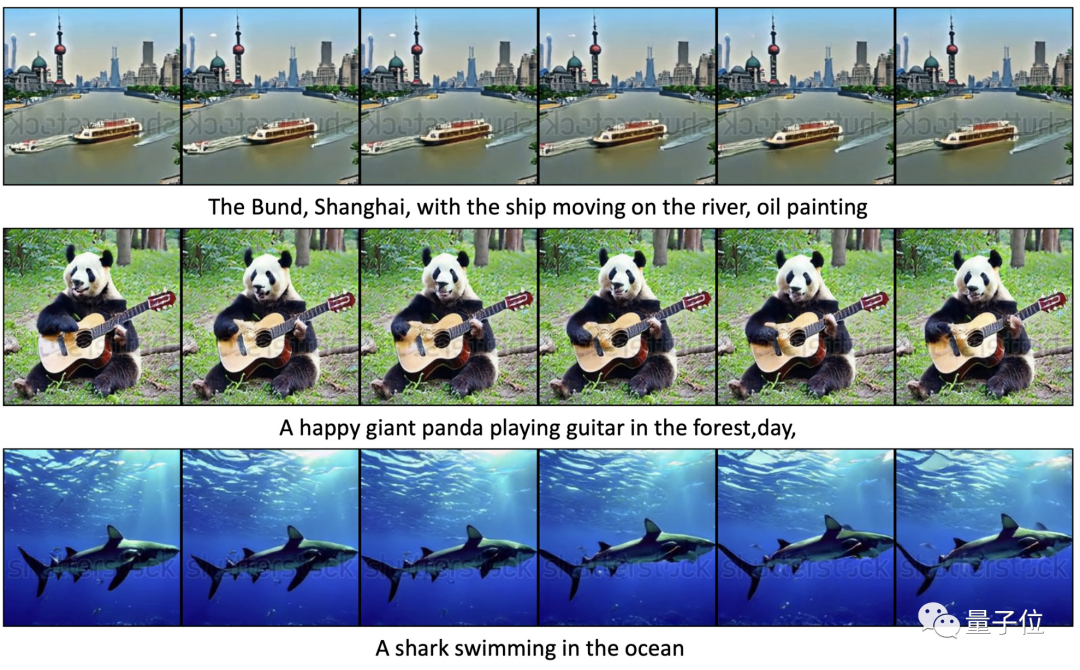
#Some netizens commented that Apple finally connected text to images.

So, how exactly does MDM’s “matryoshka” technology work?
Combining overall and progressive
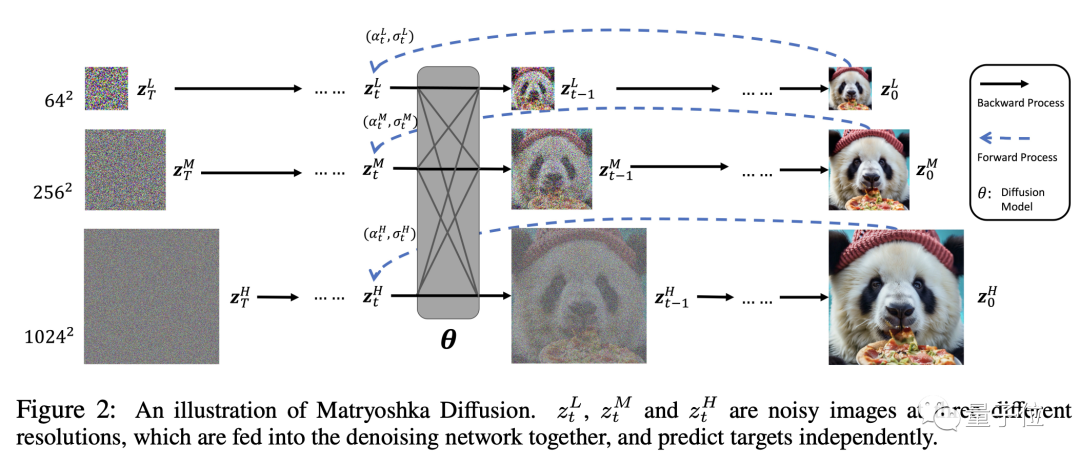
Before starting training, the data needs to be preprocessed. High-resolution images will be resampled using a certain algorithm. Get different resolution versions.
Then we use these data of different resolutions for joint UNet modeling. The small UNet handles low resolution and is nested into the large UNet that handles high resolution.
Through cross-resolution connections, features and parameters can be shared between UNets of different sizes.
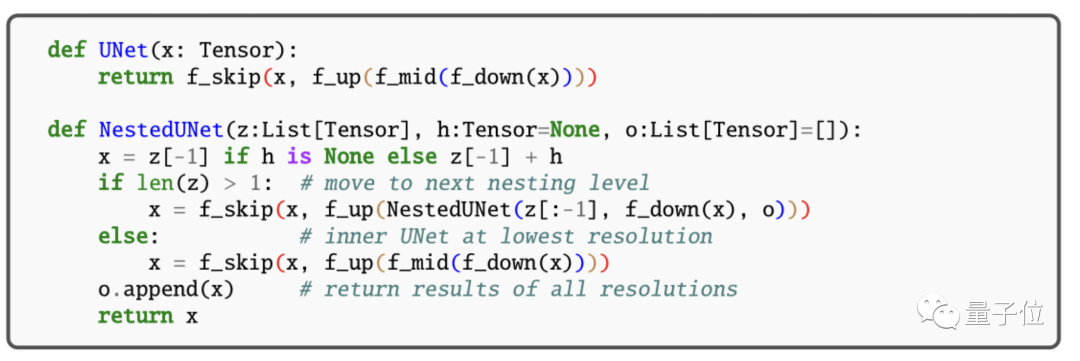
#MDM training is a step-by-step process.
Although the modeling is jointly performed, the training process will not be performed for high resolution at the beginning, but will gradually expand from low resolution.
This can avoid a huge amount of calculations, and also allows the pre-training of low-resolution UNet to accelerate the high-resolution training process.
During the training process, higher-resolution training data will be gradually added to the overall process, allowing the model to adapt to the progressively increasing resolution and smoothly transition to the final high-resolution process.

However, overall, after the high-resolution process is gradually added, MDM training is still an end-to-end joint process.
In joint training at different resolutions, loss functions at multiple resolutions participate in parameter updates together, avoiding the accumulation of errors caused by multi-stage training.
Each resolution has a corresponding reconstruction loss of the data item. The losses of different resolutions are weighted and merged. In order to ensure the generation quality, the low-resolution loss has a larger weight.
In the reasoning phase, MDM also adopts a strategy that combines parallelism and progression.
In addition, MDM also uses a pre-trained image classification model (CFG) to guide the generated samples to be optimized in a more reasonable direction, and adds noise to low-resolution samples to make them closer to high-resolution samples. The distribution of the sample.
So, what is the effect of MDM?
Fewer parameters rival SOTA
In terms of images, on the ImageNet and CC12M data sets, MDM's FID (the lower the value, the better the effect) and CLIP performance are significantly better than the ordinary diffusion model.
FID is used to evaluate the quality of the image itself, and CLIP illustrates the degree of matching between the image and text instructions.

Compared with SOTA models such as DALL E and IMAGEN, the performance of MDM is also very close, but the training parameters of MDM are far less than these models.
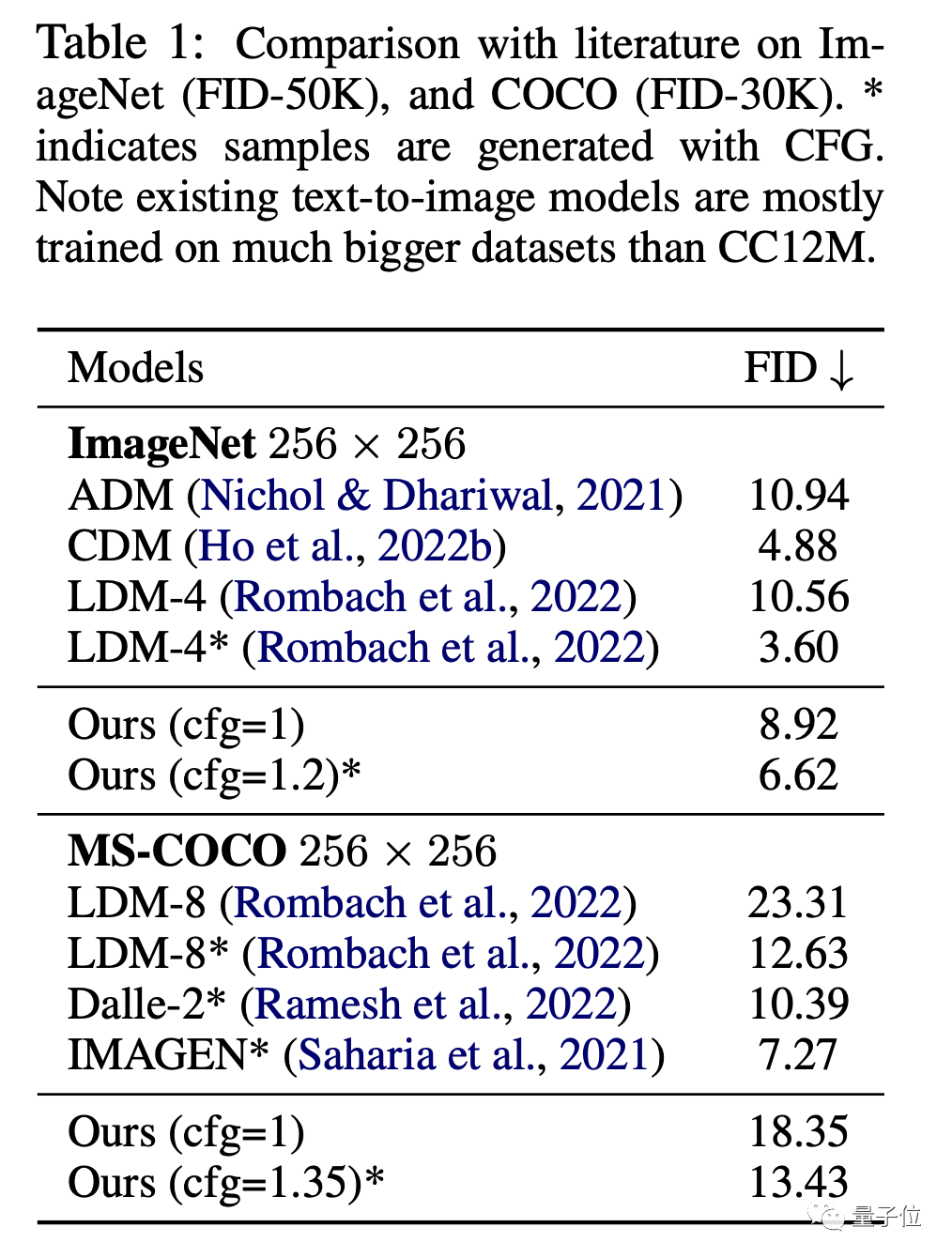
Not only is it better than the ordinary diffusion model, the performance of MDM also exceeds that of other cascade diffusion models.

Ablation experiment results show that the more steps of low-resolution training, the more obvious the MDM effect enhancement; on the other hand, the more nesting levels, the same results will be achieved. The CLIP score requires fewer training steps.
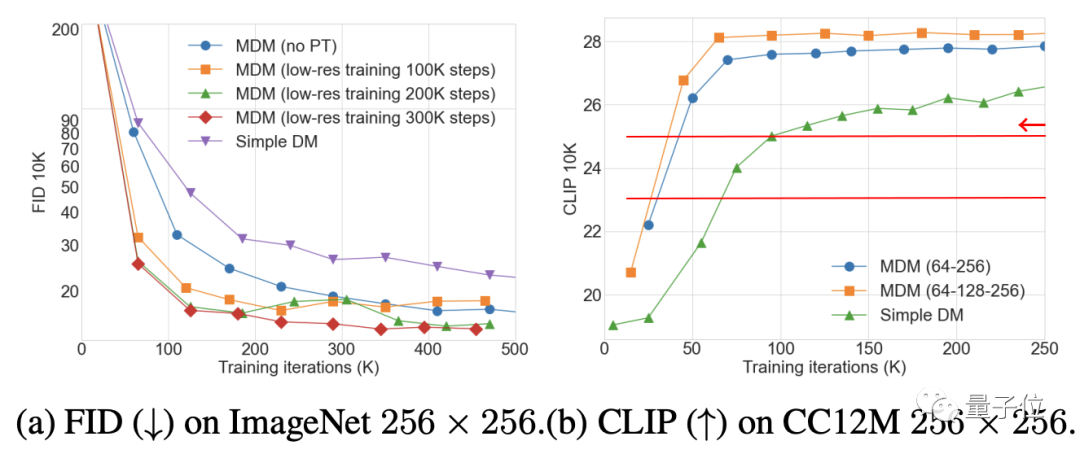
The selection of CFG parameters is a result of the trade-off between FID and CLIP after multiple tests (a high CLIP score corresponds to an increase in CFG strength).

The above is the detailed content of Apple's 'matryoshka”-style diffusion model reduces the number of training steps by 70%!. For more information, please follow other related articles on the PHP Chinese website!

Hot AI Tools

Undresser.AI Undress
AI-powered app for creating realistic nude photos

AI Clothes Remover
Online AI tool for removing clothes from photos.

Undress AI Tool
Undress images for free

Clothoff.io
AI clothes remover

AI Hentai Generator
Generate AI Hentai for free.

Hot Article

Hot Tools

Notepad++7.3.1
Easy-to-use and free code editor

SublimeText3 Chinese version
Chinese version, very easy to use

Zend Studio 13.0.1
Powerful PHP integrated development environment

Dreamweaver CS6
Visual web development tools

SublimeText3 Mac version
God-level code editing software (SublimeText3)

Hot Topics
 Open source! Beyond ZoeDepth! DepthFM: Fast and accurate monocular depth estimation!
Apr 03, 2024 pm 12:04 PM
Open source! Beyond ZoeDepth! DepthFM: Fast and accurate monocular depth estimation!
Apr 03, 2024 pm 12:04 PM
0.What does this article do? We propose DepthFM: a versatile and fast state-of-the-art generative monocular depth estimation model. In addition to traditional depth estimation tasks, DepthFM also demonstrates state-of-the-art capabilities in downstream tasks such as depth inpainting. DepthFM is efficient and can synthesize depth maps within a few inference steps. Let’s read about this work together ~ 1. Paper information title: DepthFM: FastMonocularDepthEstimationwithFlowMatching Author: MingGui, JohannesS.Fischer, UlrichPrestel, PingchuanMa, Dmytr
 The world's most powerful open source MoE model is here, with Chinese capabilities comparable to GPT-4, and the price is only nearly one percent of GPT-4-Turbo
May 07, 2024 pm 04:13 PM
The world's most powerful open source MoE model is here, with Chinese capabilities comparable to GPT-4, and the price is only nearly one percent of GPT-4-Turbo
May 07, 2024 pm 04:13 PM
Imagine an artificial intelligence model that not only has the ability to surpass traditional computing, but also achieves more efficient performance at a lower cost. This is not science fiction, DeepSeek-V2[1], the world’s most powerful open source MoE model is here. DeepSeek-V2 is a powerful mixture of experts (MoE) language model with the characteristics of economical training and efficient inference. It consists of 236B parameters, 21B of which are used to activate each marker. Compared with DeepSeek67B, DeepSeek-V2 has stronger performance, while saving 42.5% of training costs, reducing KV cache by 93.3%, and increasing the maximum generation throughput to 5.76 times. DeepSeek is a company exploring general artificial intelligence
 KAN, which replaces MLP, has been extended to convolution by open source projects
Jun 01, 2024 pm 10:03 PM
KAN, which replaces MLP, has been extended to convolution by open source projects
Jun 01, 2024 pm 10:03 PM
Earlier this month, researchers from MIT and other institutions proposed a very promising alternative to MLP - KAN. KAN outperforms MLP in terms of accuracy and interpretability. And it can outperform MLP running with a larger number of parameters with a very small number of parameters. For example, the authors stated that they used KAN to reproduce DeepMind's results with a smaller network and a higher degree of automation. Specifically, DeepMind's MLP has about 300,000 parameters, while KAN only has about 200 parameters. KAN has a strong mathematical foundation like MLP. MLP is based on the universal approximation theorem, while KAN is based on the Kolmogorov-Arnold representation theorem. As shown in the figure below, KAN has
 Hello, electric Atlas! Boston Dynamics robot comes back to life, 180-degree weird moves scare Musk
Apr 18, 2024 pm 07:58 PM
Hello, electric Atlas! Boston Dynamics robot comes back to life, 180-degree weird moves scare Musk
Apr 18, 2024 pm 07:58 PM
Boston Dynamics Atlas officially enters the era of electric robots! Yesterday, the hydraulic Atlas just "tearfully" withdrew from the stage of history. Today, Boston Dynamics announced that the electric Atlas is on the job. It seems that in the field of commercial humanoid robots, Boston Dynamics is determined to compete with Tesla. After the new video was released, it had already been viewed by more than one million people in just ten hours. The old people leave and new roles appear. This is a historical necessity. There is no doubt that this year is the explosive year of humanoid robots. Netizens commented: The advancement of robots has made this year's opening ceremony look like a human, and the degree of freedom is far greater than that of humans. But is this really not a horror movie? At the beginning of the video, Atlas is lying calmly on the ground, seemingly on his back. What follows is jaw-dropping
 AI subverts mathematical research! Fields Medal winner and Chinese-American mathematician led 11 top-ranked papers | Liked by Terence Tao
Apr 09, 2024 am 11:52 AM
AI subverts mathematical research! Fields Medal winner and Chinese-American mathematician led 11 top-ranked papers | Liked by Terence Tao
Apr 09, 2024 am 11:52 AM
AI is indeed changing mathematics. Recently, Tao Zhexuan, who has been paying close attention to this issue, forwarded the latest issue of "Bulletin of the American Mathematical Society" (Bulletin of the American Mathematical Society). Focusing on the topic "Will machines change mathematics?", many mathematicians expressed their opinions. The whole process was full of sparks, hardcore and exciting. The author has a strong lineup, including Fields Medal winner Akshay Venkatesh, Chinese mathematician Zheng Lejun, NYU computer scientist Ernest Davis and many other well-known scholars in the industry. The world of AI has changed dramatically. You know, many of these articles were submitted a year ago.
 The vitality of super intelligence awakens! But with the arrival of self-updating AI, mothers no longer have to worry about data bottlenecks
Apr 29, 2024 pm 06:55 PM
The vitality of super intelligence awakens! But with the arrival of self-updating AI, mothers no longer have to worry about data bottlenecks
Apr 29, 2024 pm 06:55 PM
I cry to death. The world is madly building big models. The data on the Internet is not enough. It is not enough at all. The training model looks like "The Hunger Games", and AI researchers around the world are worrying about how to feed these data voracious eaters. This problem is particularly prominent in multi-modal tasks. At a time when nothing could be done, a start-up team from the Department of Renmin University of China used its own new model to become the first in China to make "model-generated data feed itself" a reality. Moreover, it is a two-pronged approach on the understanding side and the generation side. Both sides can generate high-quality, multi-modal new data and provide data feedback to the model itself. What is a model? Awaker 1.0, a large multi-modal model that just appeared on the Zhongguancun Forum. Who is the team? Sophon engine. Founded by Gao Yizhao, a doctoral student at Renmin University’s Hillhouse School of Artificial Intelligence.
 Kuaishou version of Sora 'Ke Ling' is open for testing: generates over 120s video, understands physics better, and can accurately model complex movements
Jun 11, 2024 am 09:51 AM
Kuaishou version of Sora 'Ke Ling' is open for testing: generates over 120s video, understands physics better, and can accurately model complex movements
Jun 11, 2024 am 09:51 AM
What? Is Zootopia brought into reality by domestic AI? Exposed together with the video is a new large-scale domestic video generation model called "Keling". Sora uses a similar technical route and combines a number of self-developed technological innovations to produce videos that not only have large and reasonable movements, but also simulate the characteristics of the physical world and have strong conceptual combination capabilities and imagination. According to the data, Keling supports the generation of ultra-long videos of up to 2 minutes at 30fps, with resolutions up to 1080p, and supports multiple aspect ratios. Another important point is that Keling is not a demo or video result demonstration released by the laboratory, but a product-level application launched by Kuaishou, a leading player in the short video field. Moreover, the main focus is to be pragmatic, not to write blank checks, and to go online as soon as it is released. The large model of Ke Ling is already available in Kuaiying.
 The U.S. Air Force showcases its first AI fighter jet with high profile! The minister personally conducted the test drive without interfering during the whole process, and 100,000 lines of code were tested for 21 times.
May 07, 2024 pm 05:00 PM
The U.S. Air Force showcases its first AI fighter jet with high profile! The minister personally conducted the test drive without interfering during the whole process, and 100,000 lines of code were tested for 21 times.
May 07, 2024 pm 05:00 PM
Recently, the military circle has been overwhelmed by the news: US military fighter jets can now complete fully automatic air combat using AI. Yes, just recently, the US military’s AI fighter jet was made public for the first time and the mystery was unveiled. The full name of this fighter is the Variable Stability Simulator Test Aircraft (VISTA). It was personally flown by the Secretary of the US Air Force to simulate a one-on-one air battle. On May 2, U.S. Air Force Secretary Frank Kendall took off in an X-62AVISTA at Edwards Air Force Base. Note that during the one-hour flight, all flight actions were completed autonomously by AI! Kendall said - "For the past few decades, we have been thinking about the unlimited potential of autonomous air-to-air combat, but it has always seemed out of reach." However now,





